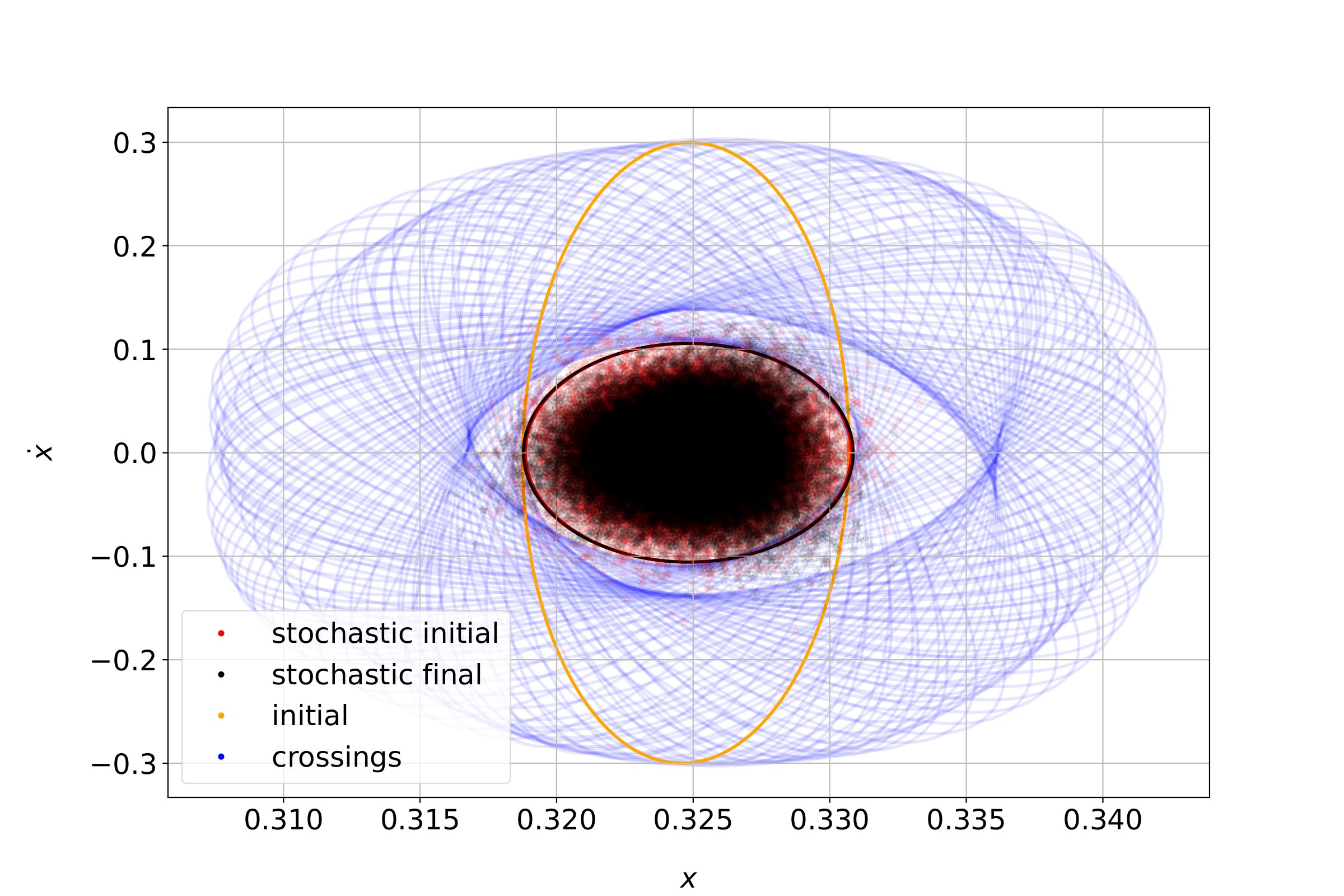Stochastic Continuation
Background

An essential part of any spacecraft mission is the design, planning, and operation of robust and fuel-efficient trajectories that can fulfill mission requirements while coping with the harsh reality of the space environment. These trajectories are traditionally engineered in a two-step approach. First, orbits are designed in a deterministic fashion, assuming that the dynamics and state of the spacecraft are known with infinite accuracy. Secondly, the robustness of these initial conditions is tested against model uncertainties and knowledge errors using brute-force Monte Carlo simulations that explore different realizations of the uncertainty set. This two-step approach is not only time-consuming but also contributes to slowing down the mission development process as the robustness of candidate orbits can only be assessed a-posteriori.
This project is a collaboration between the ACT and the Surrey Space Center Astrodynamics Lab and it aims at implementing and developing novel stochastic continuation procedures in astrodynamics (with a focus on the circular restricted three-body problem) that have the potential to transform the trajectory design process by accounting for uncertainties from the very beginning of the design phase. The goal is to directly calculate, up to a certain confidence level, regions of the phase space where the spacecraft’s distribution is expected to evolve depending on the time scales and uncertainties. The numerical procedures will be general by nature and therefore applicable to a variety of spacecraft missions, including ESA’s Hera, aiming towards the binary asteroid 65803 Didymos, and the JAXA-lead MMX, destined for Phobos.
Project goals
In this project, we are developing a framework for the propagation of probability density functions on Poincaré maps, via the algebra of truncated polynomials [1,2]. This framework is used to establish a stochastic continuation formulation in the context of the circular restricted three-body problem, and to apply it for different dynamical systems ranging from Earth-Moon to small bodies [3]. Furthermore, we are also exploring more extended formulations that include control.
References
[1] Armellin, Roberto, Pierluigi Di Lizia, Franco Bernelli-Zazzera, and Martin Berz. "Asteroid close encounters characterization using differential algebra: the case of Apophis." Celestial Mechanics and Dynamical Astronomy 107 (2010): 451-470.
[2] Acciarini Giacomo, Baresi Nicola, Lloyd David, and Izzo Dario. "Stochastic Continuation of Trajectories in the Circular Restricted Three-Body Problem via Differential Algebra". In 29th International Symposium on Space Flight Dynamics (2024).
[3] Acciarini Giacomo, Baresi Nicola, Lloyd David, and Izzo Dario. "Stochastic Continuation for Space Trajectory Design". In ESA GNC and ICATT (2023).